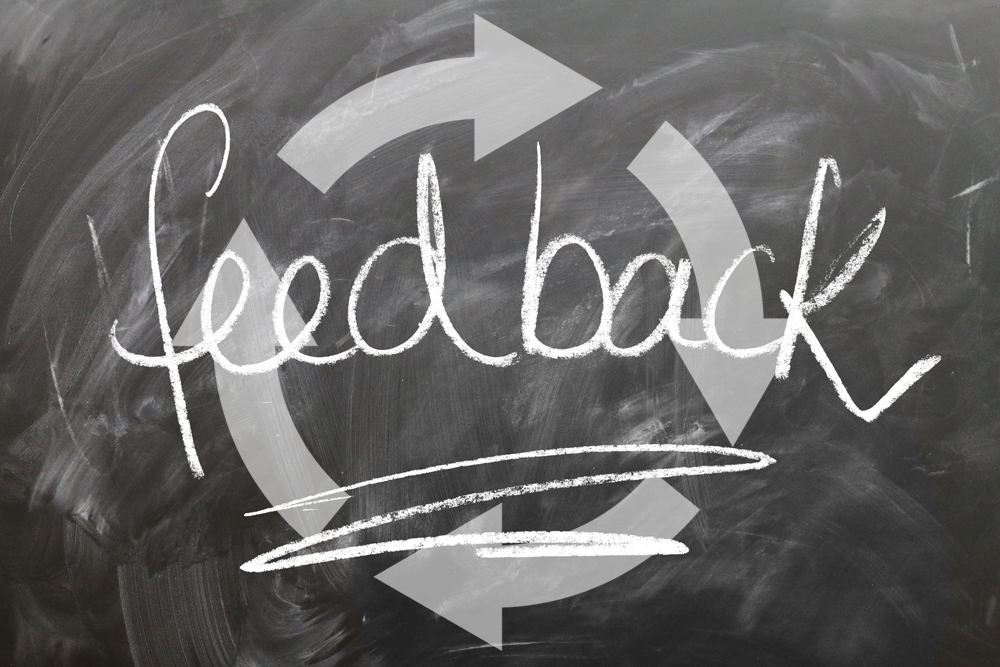Spain’s Whistleblowing Directive: A Step towards Transparency and Accountability
Posted November 13th, 2023

Whistleblowing plays a crucial role in uncovering misconduct, corruption, and unethical practices within organizations. Recognizing the importance of whistleblower protection, the Spanish government took a significant stride towards transparency and accountability by introducing the Whistleblowing Directive. This landmark legislation aims to create a safe and supportive environment for individuals who choose to expose wrongdoing in the public interest. In this article, we delve into Spain’s Whistleblowing Directive, its key provisions, and the potential impact it can have on the country’s governance.
Enhanced Protection for Whistleblowers
Spain’s Whistleblowing Directive seeks to provide enhanced legal protection for whistleblowers and encourage them to come forward without fear of retaliation. Under the directive, both employees and self-employed individuals who report violations of law, breaches of public trust, or threats to the general interest are eligible for protection. This includes whistleblowers in the private sector, public administration, and nonprofit organizations.
Confidentiality and Anonymity
To ensure the safety and security of whistleblowers, the directive emphasizes confidentiality and anonymity. Whistleblowers have the right to remain anonymous throughout the entire reporting process, protecting them from potential reprisals. Confidentiality obligations are placed upon the recipients of the reports, such as employers or authorities, who are required to handle the information in a secure manner and refrain from disclosing the whistleblower’s identity.
Reporting Channels and Obligations
The directive mandates organizations to establish internal reporting channels to facilitate the disclosure of misconduct. Employers with over 50 employees or with an annual turnover exceeding €10 million are required to implement effective reporting mechanisms, including clear procedures for receiving, handling, and investigating reports. Additionally, public sector entities and certain organizations in critical sectors, such as finance and healthcare, must comply with these requirements.
Reprisal Protection
A fundamental aspect of the Whistleblowing Directive is its focus on preventing reprisals against whistleblowers. The legislation prohibits any form of retaliation, including dismissal, demotion, harassment, or discriminatory treatment. It empowers whistleblowers to seek legal recourse if they experience adverse actions as a result of their disclosures. The burden of proof is shifted to the employer, who must demonstrate that any measures taken against the whistleblower were unrelated to their reporting activities.
Impact and Implications
Spain’s Whistleblowing Directive marks a significant step towards promoting transparency, integrity, and accountability in the country. By protecting individuals who expose wrongdoing, the legislation can help uncover corruption, fraud, and other illegal activities that may harm public interest or private organizations. Whistleblowing has the potential to deter misconduct and encourage ethical behavior by creating a culture of accountability.
Moreover, the directive aligns Spain with international best practices and EU standards on whistleblower protection. It puts Spain on par with countries like France, Germany, and the United Kingdom, which have already implemented comprehensive whistleblower protection laws.
Incogneato, as an anonymous feedback platform, can play a crucial role in supporting Spain’s new Whistleblowing directive in several ways:
- Anonymous Reporting: Incogneato provides a secure and anonymous reporting channel for whistleblowers. Through its encrypted communication channels, individuals can submit reports without revealing their identity, ensuring their safety and protection from potential retaliation.
- Confidentiality and Data Security: Incogneato prioritizes confidentiality and data security. The platform employs robust encryption measures and strict data protection protocols to safeguard the information provided by whistleblowers. This ensures that sensitive data is handled securely and remains confidential throughout the reporting process.
- Compliance and Documentation: The platform helps organizations demonstrate compliance with the Whistleblowing directive’s requirements. By utilizing Incogneato, organizations can maintain comprehensive records of whistleblowing reports, actions taken, and the overall resolution process. These records can serve as evidence of compliance and can be easily accessed if required by authorities.
By utilizing Incogneato, organizations can effectively implement the Whistleblowing directive’s requirements, enhance their whistleblowing processes, and create a safe environment for individuals to report misconduct. The platform’s features and capabilities contribute to the overall effectiveness and success of Spain’s new Whistleblowing directive in promoting transparency, accountability, and integrity within organizations.
How Companies are Doing on their 2022 DEI Goals
Posted June 23rd, 2022
“When DEI is strong, people are supported and valued as humans…They’re empowered to do their best work—free from stress, distraction, and harm that results from prejudice, bias, unfair treatment, or the feeling that they have to assimilate or hide their true selves in order to be successful.”
— Mykaela Doane, Head of People at Gtmhub, to Built In






Going into 2022, organizations may have planned to improve or enhance DEI (Diversity, Equity and Inclusion) goals. But are they actually succeeding?
In this post, we cover:
- Recent data on how companies are faring with DEI in 2022
- Potential reasons why they’re succeeding or not
- How to infuse DEI into your organization’s DNA
Data on DEI in 2022
DEI includes race, ethnicity, gender, gender identity, sexual orientation, age, socioeconomic class, physical ability or attributes, religious or ethical values, national origin, or political beliefs.
Part of improving DEI is setting DEI goals in the first place. You’d think this would be a given, but recent data from Built In’s State of DEI in Tech 2022 report says otherwise.
While 40% of company leaders planned to report on DEI metrics in 2022, 30% say their companies currently have no DEI programs or are making poor progress toward DEI goals. Why?
Let’s use hiring as an example. Companies missed their DEI hiring goals in 2021 due to:
- Lack of resources and partnerships
- Lack of employer branding
- Lack of time
- Lack of dedicated DEI staff
Have employers succeeded in building more diverse workforces? Yes and no. Regarding gender, over 64% of respondents in the 2022 survey identified as women—-a jump from over 51% who responded in 2020.
However, non-binary employees are still underrepresented. Eighty-seven percent of non-binary individuals make up less than 10 percent of staff. Anti–LGBTQ discrimination is still all-too-prevalent. According to CNBC, over 45% of LGBTQ workers say they’ve experienced unfair treatment at work, including being fired, not hired, or harassed because of their sexual orientation or gender identity at some point in their lives.

That doesn’t mean that LGBTQ workers feel that they have to suffer in silence. Three-fourths say that it’s crucial for them to work at a company where they’re comfortable expressing their identity, and two-thirds say they’d leave their current job if they felt they couldn’t do so.
In matters of racial disparity, workforces were reportedly 20% more diverse in 2022 than in 2020. While workforces with Black or African American employees increased by 13%, they remain glaringly underrepresented. Almost two in three companies (62%) say Black or African American employees account for less than 10 percent of their workforce.
One area that notably improved was the hiring of employees with mental disabilities. In 2020, 36% of companies said they had no employees with disabilities. The number dropped to 12% in 2022. Unfortunately, this isn’t the case for ageism in tech. Nearly 90% of employers say that their workforce has employees aged 56 and older. Nineteen percent say that they have zero employees aged 56 and older.
Ground-up change and viable solutions
Today’s chaotic business climate likely impedes DEI efforts. Right now, organizations have to deal with:
- Covid disruptions, such as switching between full-time remote, in-person office, and hybrid workstyles.
- The Great Resignation
- A tumultuous economy
However, the reasons above aren’t valid excuses to deprioritize diversity initiatives. Change begins by first, changing mindsets.
DEI shouldn’t be a box-ticking exercise or an afterthought. Companies should look at DEI as a cornerstone attribute—one on which to build successful organizations. If there are leaders who don’t make building a diverse workforce a reality, it’s time to bring in leaders who do.
Beyond mindset, companies should be intentional about how they realize their DEI goals. The Built In report spotlights Employee Resource Groups (ERGs) as impactful resources to foster inclusivity and community-building. Employees can form friendships, share experiences, host fun events, and discover ways to give back to the community.
While ERGs are a great way to make employees with underrepresented or marginalized backgrounds feel a sense of belonging, the reality is that those employees end up shouldering much of the burden of DEI work.
“Being an ERG leader is another full-time job, and sometimes ERG leaders are giving more attention towards building an inclusive culture than to their actual day job,” said Ivori Johnson, director of DEIB at ChartHop. “One thing that we’re building out is tying ERG leaders’ responsibilities into their performance reviews. We’re also trying to figure out how we can pay ERG leaders for their work.”
For managers, Harvard Business Review suggests:
- Tracking diversity metrics for hiring, retention, and growth
- Acknowledging conflict openly
- Incentivizing progress
- Holding regular listening sessions, which includes providing employees the means to give anonymous feedback and reporting
- Making daily “to-be” lists of specific ways to operate inclusively
“You can create a sense of psychological safety where everyone feels confident and comfortable to take risks, make mistakes, contribute opinions, and be candid about what they are up against…Managers have this power. You have this power.”
— Daisy Auger-Dominguez, DEI executive,
noting that middle managers have more influence than they realize.
Start by listening to your employees
Perhaps your company has set DEI goals or acknowledged it’s a priority, but intentions may not match reality. Your employees comprise your organization’s DNA and you must ensure that they feel safe, that they belong, and that they’ve been heard. It all starts by giving them ways to share their honest input, experiences, and ideas. Just one voice can transform your workplace into the exemplary organization it’s meant to be.
Do you want a safe, secure way to listen to your employees on DEI issues?
TRY IT OUT
Check Out Incogneato Now
Best Practices for Creating an Employee Suggestion Box
Posted March 16th, 2020

Creating a simple employee suggestion box can have a massive impact on employee morale, workplace culture, and the overall success of your organization. There are many other benefits of an employee suggestion box, which we have already covered in another article. This article will focus on some best practices for getting your employee suggestion box up and running.
If you’re familiar with Incogneato, then you know we make it very easy to create a suggestion box. All you need is a box title and an email address to create a live, fully-functional employee suggestion box. If you’re collecting feedback from a specific group for a single purpose, you can immediately share your box address and start collecting feedback. However, if your aim is to launch a sophisticated, long-lasting feedback program, we recommend the following steps:
- Determine what type of feedback you need to collect. Are you looking for leadership feedback? Feedback for a specific team? Or perhaps you are collecting reports of misconduct. Sometimes you can collect all employee feedback in one box, but most of the time – especially with larger organizations – it makes more sense to create a different box for each purpose. With Incogneato, you can designate box managers to view and respond to feedback left only in the box(es) they are assigned to. You can also create a customized web address for each box so employees can be sure they’re at the right place. For more thorough feedback, you can add up to 25 open-ended questions to each box.
- Make sure the executive team supports the initiative. If company leadership does not support the employee suggestion box initiative, it will be more likely to fail. Employees at all levels need to know that management cares about the feedback they provide and will actually take it to heart. If the executive team is apprehensive, try educating them on the benefits of anonymous employee feedback. You can start with The Benefits of an Anonymous Employee Suggestion box, The Research Behind Anonymous Employee Feedback, and Why Are Many People Choosing to Stay Anonymous? You can also find many more articles on our blog.
- Customize each box for its intended use. Now that you’ve created a box for each type of employee feedback you want to collect, you can customize each one so employees use it correctly. Start by adding a few lines of introduction text to each box. This is where you can ask for feedback in specific areas and assure employees that all feedback will remain anonymous. To make sure employees know they’re at the right place, you can create a custom web address for each box, upload your logo, and choose a button color to match. If you want to make sure that only certain employees access your box, you can password-protect it and/or restrict it by IP address. As we previously mentioned, you can also add up to 25 questions to each box.
- Create a launch plan. Whether you slowly roll out your employee feedback program or aim for a big push, you should create a plan for how it will be introduced to employees. Here are several ideas:
- Send a company-wide email (preferably from leadership) explaining your feedback initiative with links to your boxes.
- Post your box link to the employee intranet or other employee-only websites.
- Print out your box web address and post it in employee gathering spots.
- Ask management and HR employees to include a link to their boxes in email signatures.
- Continue promoting and sharing the boxes. As we covered in another post, the feedback loop is a revolving cycle. It needs a continuous supply of honest, open feedback to continue evolving and effecting positive change. If your initial round of feedback is light, don’t be discouraged. It can often take a few tries before employees become comfortable leaving anonymous feedback.
- Read, follow through, and communicate. One of the unique features of Incogneato is the ability to hold anonymous conversations with your respondents. If feedback is unclear, engage the employee anonymously and ask for more information. Once you feel the issue has been solved – or on a path to being solved – reach back out to the employee to let them know. You can also use Incogneato’s Anonymous Voting and Discussion tool to crowdsource an idea with a larger group.
If you haven’t already, you can give Incogneato a try for free by setting up your first anonymous suggestion box. No credit card is required during the trial.
The Research Behind Anonymous Employee Feedback
Posted February 12th, 2020

We often hear from organizations who like the idea of collecting anonymous employee feedback, but want to see some research before launching a suggestion box of their own. Fortunately, there’s lots out there. To assist, we’ve compiled the following list:
- A 2006 study published in the Journal of Nursing Management looked at the effectiveness of using anonymous feedback as a component of nurse management evaluations at Tel-Aviv University. The authors found that anonymous feedback “is an effective tool by which real feedback is gathered on ‘things which are not talked about’.” They further found that anonymous feedback offered a unique opportunity for low-ranking employees to share their opinions without fear of retaliation.
- A study published in the Journal of Applied Social Psychology looked at the impact of anonymity vs. confidentiality in surveys that included sensitive questions involving cheating. The authors found that 47% of the respondents admitted to cheating when anonymity was guaranteed, while only 13% admitted to cheating when confidentiality was promised.
- Studies conducted by Professor Craig Scott at the University of Texas and Professor Stephen Rains at the University of Arizona suggest that there is an important place for anonymous communication within organizations. Additionally, he found that anonymity provides “less enfranchised organizational members with important communication opportunities.”
- According to the Harvard Business Review, respondents are more likely to participate in surveys if they are confident that personal anonymity is guaranteed.
- Professor Peter Cappelli of the Wharton Business School argues that anonymous feedback is an effective tool for improving company culture because it empowers conscientious employees to bring their full capabilities to bear on improving the company, without fear of reprisal.
Closing the Employee Feedback Loop with Anonymous Feedback
Posted January 14th, 2020

Traditionally, collecting employee feedback was limited to annual performance reviews or irregular feedback requests. Smart organizations gradually realized that employee feedback should function as an ongoing loop, ever evolving to strengthen the organization.
Using a “loop” as a visual indicator helps to convey the revolving nature of employee feedback. The loop begins with the collection of candid, honest feedback, which management then analyzes and uses to develop a plan of action. Once the plan is in place, employees are encouraged to continue submitting feedback and the plan of action continues to evolve. The result is a stronger organization with happier employees, who in turn create more satisfied customers.
Limitations of Direct Employee Feedback
In order for a feedback loop to continue evolving, it needs a continuous supply of honest, open feedback. Without it, action plans can become watered down, or in the worst case, never develop. As we’ve covered in another post on anonymity, employees tend to avoid negativity when providing direct feedback and are reluctant to irritate or challenge their superiors. In an article on conducting employee surveys, HBR noted that when asked to submit feedback, anonymity is the number one concern for employees. The same study shows that when employees have a guarantee of anonymity, they are more likely to submit honest, productive feedback — and even submit more of it.
Closing the Feedback Loop with Incogneato
Incogneato plays an essential role in both closing the employee feed loop and helping it continue to revolve. As a trusted third party, Incogneato helps organizations collect anonymous employee feedback without having to worry about inadvertently storing log files or otherwise finding out the identity of an employee who wished to remain anonymous. With a trusted system in place, employees will be more likely to continue submitting the type of honest, productive feedback that keeps the feedback loop revolving.
How Is Incogneato Different from Other Anonymous Suggestion Boxes?
One of the key differences between Incogneato and other suggestion boxes is the ability to hold an anonymous conversation. Often times that initial piece of employee feedback leads to more questions that would otherwise go unanswered. Our Anonymous Chat feature lets you immediately ask a follow up question or for request further clarification. This one feature is key to a more effective employee feedback loop, as it helps management to more thoroughly understand the issue before an action plan is developed. Another difference is price.
We believe that all organizations should be able to safely collect anonymous feedback without having to pay hefty monthly fees.
If you haven’t already, give Incogneato a try by setting up a free anonymous suggestion box. No credit card is required during your trial.
Anonymous Reporting as a Compliance Tool
Posted December 17th, 2019

Once a niche role limited to the financial and insurance industries, the field of compliance management has been on the rise as organizations are faced with increased regulation, litigation, and consumer outcry. Corporations, healthcare providers, government agencies, and even small businesses now need to be more vigilant than ever in order to protect themselves. According to the US Bureau of Labor Statistics, job growth in a specific area of compliance management (financial examiners) is projected to grow by 7% in the next decade. That’s 2% more than the average of all occupations nationwide.
Compliance management is a diverse field with responsibilities including reviewing current practices, identifying relevant laws and regulations, educating staff, predicting future risks, and conducting internal investigations. While each responsibility has its own set of challenges, conducting internal investigations can be among the most difficult – especially when unethical or illegal events have taken place.
How Can Incogneato Help?
Organizations are increasingly turning to Incogneato to help collect anonymous whistleblower feedback from employees at all levels. Research shows that anonymous feedback can be very effective in gathering information from people who would otherwise remain silent out of fear of retaliation or embarrassment. One of the key differences between Incogneato and other whistleblower tools is the ability to hold an anonymous conversation. Often times that initial tip leads to more questions that would otherwise go unanswered. The Anonymous Chat feature lets you immediately ask for more details or to clarify those already given.
Is Incogneato Really Anonymous?
Incogneato takes anonymity and security seriously. In addition to using 256-bit SSL encryption for all communication within Incogneato, there is continuous threat monitoring in place and the latest server software is always in use. Perhaps most significantly, Incogneato does not collect any personal identifying information from those submitting feedback, unless they choose to include an email address (which is encrypted before storing).
If you haven’t already, give Incogneato a try by setting up a free anonymous suggestion box. No credit card is required during your trial.
Why Are Many People Choosing to Stay Anonymous?
Posted September 24th, 2019

In recent years, people have become more aware of the dangers associated with sharing mounds of personal information online. Data breaches are certainly nothing new, but used to affect larger organizations more so than the reputations of individuals. Then came a series of Facebook data breaches starting in 2013, followed by Tumblr, Twitter, Google+ and more. In total, more than 545 million records were exposed in Facebook’s breaches alone. Another 65 million were exposed in the Tumblr hack, and the list goes on and on.
At first, many thought the breaches wouldn’t make a dent in the massive numbers of people interacting within these networks. Over time, however people began to take action. One study conducted over the summer of 2018 found that 42% of Facebook users took a break from the site in the past year. It further found that 52% adjusted their privacy settings, and 26% deleted the app from their phone. While still growing, Facebook’s growth has been slowing down across North America and in Europe. In addition to Facebook, Tumblr growth has slowed significantly and Twitter appears to have plateaued several years ago.
On the other side of the coin is Reddit — a social network known for anonymity and “throwaway accounts.” Reddit’s user base has been skyrocketing over the past few years and is projected to continue growing through 2023. Unlike other social networks, many Reddit users attempt to remain anonymous and completely control what they reveal about themselves. Using these anonymous accounts, Reddit users are free to engage in candid discussion across millions of topics.
What Does This Mean for Workplace Feedback?
People have become much more aware of the dangers associated with sharing personal information. The lessons learned from social media can have a direct effect in other areas of life as well. Someone who is less likely to post personal information on Facebook out of fear of it being seen by the wrong pair of eyes may be equally as reluctant to comment on workplace issues out in the open. We’ve learned that data can be breached and anything we say can be used against us at some point. This is especially salient when dealing with contentious or sensitive issues.
So What’s the Solution?
Using an anonymous suggestion box to collect workplace feedback (like Incogneato) can help employees feel more comfortable giving candid, honest feedback. Additionally, using a trusted third party to collect anonymous feedback prevents organizations from mistakenly storing log files or other pieces of data that can inadvertently reveal the identities of respondents. As we’ve covered in another post, there’s lots more research supporting the use of anonymous feedback.
What Makes Incogneato Safe?
Incogneato takes anonymity and security seriously. In addition to using 256-bit SSL encryption for all communication within Incogneato, there is continuous threat monitoring in place, and the latest server software is always in use. Perhaps most significantly, Incogneato does not collect any personal identifying information from those submitting feedback, unless they choose to include an email address (which is encrypted before storing).
If you haven’t already, give Incogneato a try by setting up a free anonymous suggestion box. No credit card is required during your trial.
Does Anonymous Workplace Feedback Really Work?
Posted September 3rd, 2019

If you know what we do at Incogneato, then you can likely assume our position on this question. However, as the number of companies we help collect anonymous employee feedback continues to grow, we uncover new reasons for why it is so effective.
First, the counterargument…
Most often, we hear “anonymity breeds negativity.” It’s hard to argue with that one. Just hang out on Reddit for a few minutes and you’ll see it firsthand. However, we’ve found that anonymity does not exclusively breed negativity. And oftentimes when it does, the negative feedback is also constructive. The trick is to brush off the negativity — and if you can — learn to pick out the constructive pieces.
Take for example the following (fictitious) piece of feedback:
“Bob the manager is universally hated. He treats everyone like garbage and genuinely has a chip on his shoulder. I quit because of him.”
Obviously, the feedback is harsh and Bob would prefer not to be told off in this manner. At the same time, it’s brutally honest. Bob likely does have issues with his employees and may have never known they felt this way before. He may have previously viewed himself as strict but fair based on face-to-face feedback he’s received. If Bob can move past the comment’s bluntness, he can change for the better.
Does anonymity breed honesty?
According to HR expert and author Steve Cohen, many employees fall into the category of flighters. In other words, they eschew conflict and often busy themselves with other work or avoid managers altogether when there is perceived conflict. Flighters are also more likely to withhold knowledge and gossip internally, which is never healthy for an organization. On the opposing end of course are fighters. These people gain power by force or personality. Often times when fighters go head-to-head with flighters, the flighter backs down and decides to withhold key information. Anonymous tools that remove the risk of conflict (like Incogneato) are highly effective in gaining honest insights from these conflict-averse employees.
But my organization is open and communicative. Can we still benefit from anonymous feedback?
While unlikely, let’s pretend there exists an organization where every employee and manager is approachable, cordial, and accepts feedback graciously. Can this organization still benefit from anonymous feedback? Absolutely, and here’s why. Sitting in front of a screen composing feedback allows the employee to collect their thoughts without having to focus on a person in front of them. We are biologically attuned to the emotions of those around us. Removing them from the situation opens up our ability to convey our thoughts honestly without thinking about how others will immediately react. In other words, employees are in a safe place where they can focus on the feedback instead of the person.
I’m convinced. But how is Incogneato different from other anonymous feedback tools?
One of the key differences between Incogneato and other suggestion boxes is the ability to hold an anonymous conversation. Often times that initial piece of employee feedback leads to more questions that would otherwise go unanswered. Our Anonymous Chat feature lets you immediately ask a follow up question or request further clarification.
Of course, there’s also the fact that Incogneato is less expensive than most competitors. How do we do it? We run lean. We do not employ a sales force so our team is solely focused on making the best product we can.
We believe that all organizations should be able to safely collect anonymous feedback without having to pay hefty monthly fees.
When you’re ready, give Incogneato a try by setting up a free anonymous suggestion box. No credit card is required during your trial.
Putting a Hard Value on Your Anonymous Feedback Program
Posted December 27th, 2018

Before initiating an anonymous feedback program, many organizations attempt to forecast its annual value in terms of revenue saved or earned. Those who have tested anonymous feedback programs in the past have an excellent benchmark to gauge future results, but for those who have not, forecasting can be a challenge. Cost-effective and simple-to-setup solutions like Incogneato make it easy to launch a short-term test to collect data without incurring a significant expense. However, some organizations have internal policies (or preferences) that require a forecast before any program can be initiated.
Here are several strategies to help you forecast or gauge the hard value of your anonymous feedback program:
Look at Employee Retention
According to SHRM, the average cost per hire is $4,129. Another study found the cost of re-hiring a midrange position ($30-$50K per year) to be 20% of the employee’s future salary. But how do you know if you’ve actually retained an employee by addressing their anonymous complaints?
Due to the nature of anonymous feedback, you cannot actually tie an individual employee to a problem solved. You can, however, look at the severity of the anonymous complaints you’ve addressed. For example, you will likely not lose an employee over unpalatable vending machine options, but if you seriously address multiple complaints about a toxic manager or co-worker, it may be reasonable to assume that you have retained an employee. The Balance Careers published a list of the top reasons employees quit their jobs. Reasons ranged from sour relationships with coworkers to a lack of autonomy on the job.
For those forecasting potential results of an anonymous feedback program, it may be useful to look at past exit interview records and make a list of reasons employees cited for leaving. Then determine which employees could have been retained had you known about the issue and had a chance to fix it. Research shows that employees are more candid when their personal anonymity is guaranteed and may not share important information while still employed.
Are Your Customers Happy?
Customer happiness can be a difficult metric to directly measure, but in many cases can be indirectly observed by looking at repurchasing behavior or loyalty. For organizations with customer accounts, tying initial purchases to repeat purchases is simple. Those with referral or affiliate programs have the added benefit of measuring customer evangelism (word-of-mouth marketing).
Like with employee retention, you cannot tie a specific customer to their anonymous feedback, but you can look at trends while the anonymous feedback program was in place. If your repurchasing/loyalty rate jumped while you were addressing anonymous customer feedback, you may be able to assume a causal relationship.
For those forecasting potential results of an anonymous feedback program, it can be useful to look at past customer retention rates over time. If they are stagnant or low for your industry, look at exit surveys you may have collected and try to determine if any issues could have been solved had you known about them. You can also reach out to past customers to ask why they moved on.
Look at Recent Growth
Lastly, you may be able to tie organizational growth to an anonymous feedback program. It’s easy to downplay the significance of your feedback program by calling it a “simple suggestion box”, but organizations are complex entities with many inputs and outputs. A good anonymous feedback program lets you address key customer and employee concerns or ideas in a safe, meaningful way that can have massive impacts on long-term growth.
Incogneato makes it easy to collect and address anonymous feedback from employees, customers, or just about anyone else. If you haven’t already, start your free trial now. Not convinced yet? Here are five reasons to choose Incogneato for your anonymous feedback.
Should You Reply to Negative Feedback?
Posted September 11th, 2018

A common question asked by those collecting feedback is whether or not to respond to negative feedback. In our opinion, the answer is YES.
Positive feedback is great. It’s a virtual pat on the back. More importantly, it validates the work you’ve done and makes you feel good about yourself or your organization. Negative feedback on the other hand is much easier to ignore. It can often present additional work or invalidate the work you’ve done. But it should never be ignored. Here’s why:
It offers a rare path to improvement.
Trolls aside, people leave negative feedback because they are trying to help. They care about your organization or about it’s potential benefits. For every person who leaves negative feedback, many more will stay silent and simply walk away. Take negative feedback seriously and use it to improve your product or service. It may even be the case that no improvements are necessary there was a simple misunderstanding. In any case, you should always reply back to the respondent.
It opens an important dialogue.
It can be very angering to have feedback ignored, especially if the person is already upset. A quick reply can diffuse the situation immediately and open a meaningful dialogue between you and the respondent. You might not be able to solve their problem right away, but letting them know you care is a good first step. If you’re using a canned response, consider customizing it a bit by reiterating their concerns. As you work toward a solution, reply back with occasional updates or an estimated timeframe.
Not responding is responding.
Giving a respondent the cold shoulder signals that you don’t care enough to respond. At this point, they may take their grievance public and potentially damage your organization. A quick response only takes a minute and could save you significant trouble in the future.
What about anonymous feedback?
Before the release of Incogneato, replying to anonymous feedback was difficult, if not impossible. Incogneato solved that problem by allowing organizations to anonymously communicate with those who leave feedback. Acting as an intermediary, Incogneato relays messages back and forth, allowing the respondent to remain anonymous.
Improve your organization with Incogneato. Start your free trial now. Not convinced yet? Here are five reasons to choose Incogneato for your anonymous feedback.